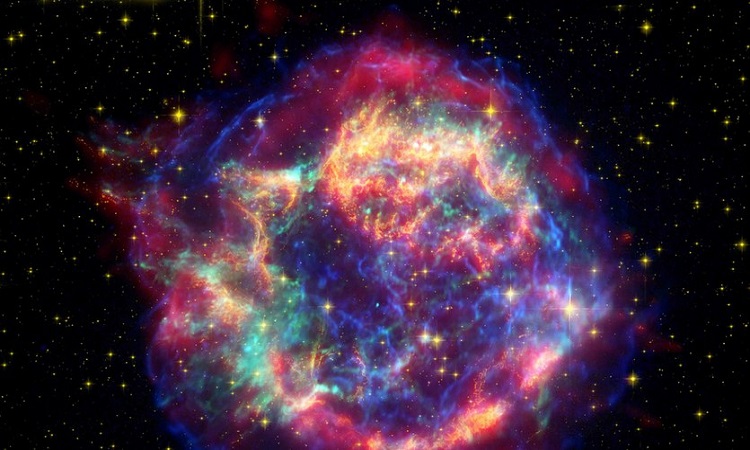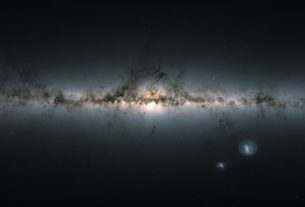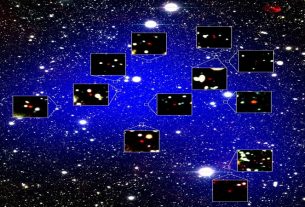Most stars evolve within galaxies, separated from each other by distances beyond comprehension. The intergalactic space (between each galaxy) seems empty, but it is not entirely so. Some solitary stars indeed sometimes wander there. For the first time, astronomers believe they have found one of these stars brain dead. It could be the first known intergalactic supernova.
The mysterious OCRs
A few weeks ago, astronomers pondered a new cosmic enigma: that of “strange radio circles” (or ORCs). These are structures made of nearly perfectly circular radio emissions that cannot be explained by a known source or object. The first ORC was discovered in September 2019 from the National Radio Astronomy Observatory (NRAO). Since then, three more of these structures have been spotted.
First seen as visual artifacts in the data, these shapes have indeed been confirmed by follow-up observations. They do not emit optical or infrared emissions or X-rays. It is also unknown how large they are or precisely how far away they are.
All that is known is that it is probable that these ORCs are not circles, but probably spheres. The reason they would appear to us as rings is perspective. Around the edges, we indeed record a greater density of emissions along our line of sight.
In short, we don’t know much.
A new OCR?
What looked like one of these strange structures was recently spotted not far from the Large Magellanic Cloud. It is a satellite galaxy orbiting the Milky Way. Again, this object named E J0624-6948 appears circular in shape and only emits radio emissions. However, follow-up observations by astronomer Miroslav Filipovic of the University of Western Sydney suggest it is actually something else.
The researchers found several differences. On the one hand, all known OCRs have been identified within galaxie. Here, this is not the case. The spectral index of radio emission is also flatter than that of ORCs, and the apparent size of J0624–6948 is also different (larger).
The researchers considered several hypotheses to explain these observations. These included a much larger ORC, a superflare from a star near the galactic center, or jets from a distant active supermassive black hole. Another idea finally stood out, imposing itself as the most coherent with the observed phenomenon.
A recent supernova
According to the authors, the most plausible explanation is that the object is an intergalactic supernova remnant due to an exploded star that once evolved in the periphery of the Large Magellanic Cloud. The researchers are referring here to a unique degenerate “Type Ia” supernova that involves the explosion of two stars orbiting each other.
“What we then potentially discovered was a unique remnant of a supernova that developed in a rarefied intergalactic environment, an environment that we did not expect to find in such an object,” the authors note in their work. “Our estimates put the age at around 2,200 to 7,100 years.”
Although supernova remnants don’t tend to be so nicely circular, that wouldn’t be a first. A handful of similar examples, like the stunning eye-shaped object SN 1987A, still in the Large Magellanic Cloud, have been documented. If the hypothesis is confirmed, this object, which would measure approximately 155 light-years in diameter, would be the first remnant of an intergalactic supernova ever identified.

Email: ben@satprwire.com Phone: +44 20 4732 1985
Ben has been listening to the technology news for quite some time that he needs just a single read to get an idea surrounding the topic. Ben is our go-to choice for in-depth reviews as well as the normal articles we cover on a normal basis.



